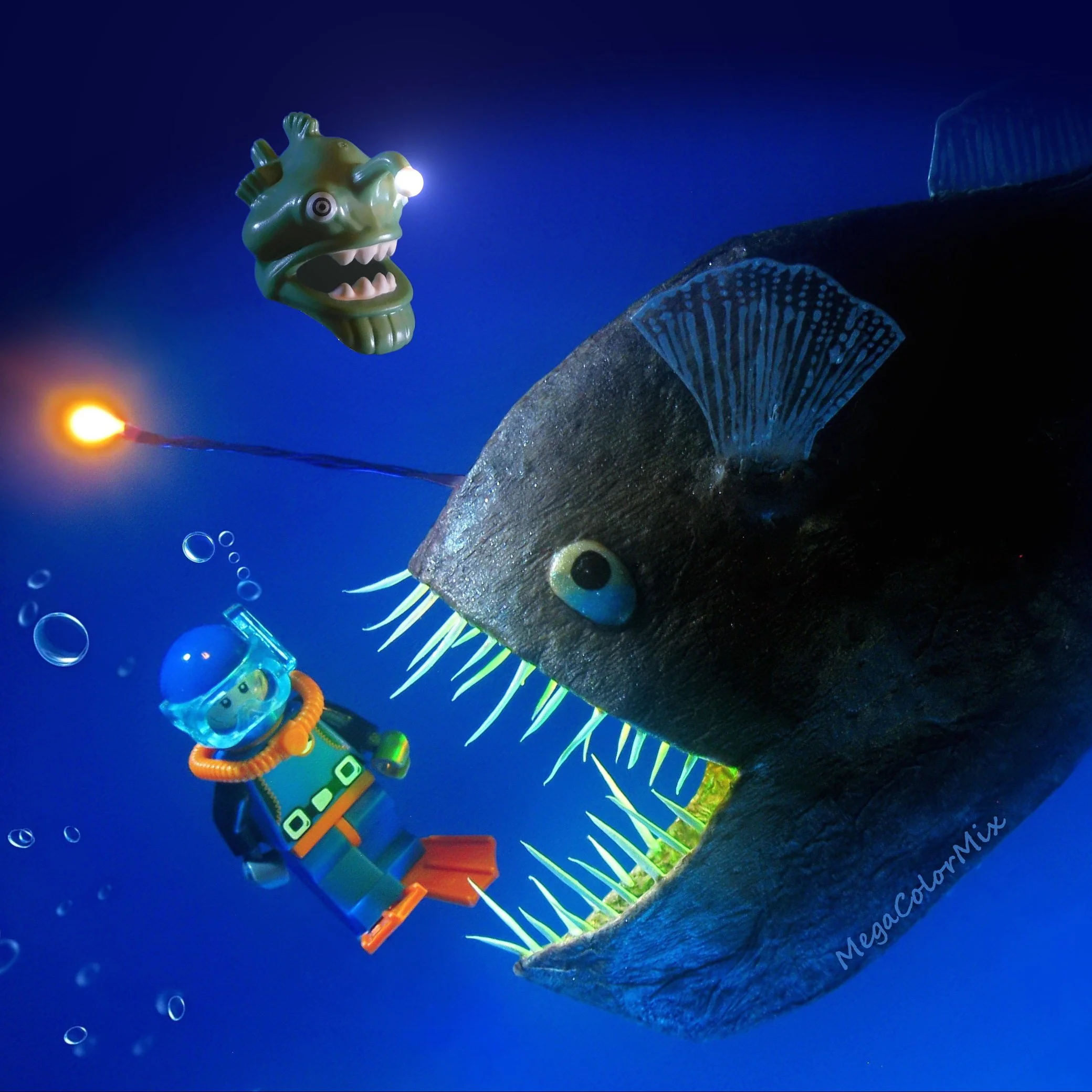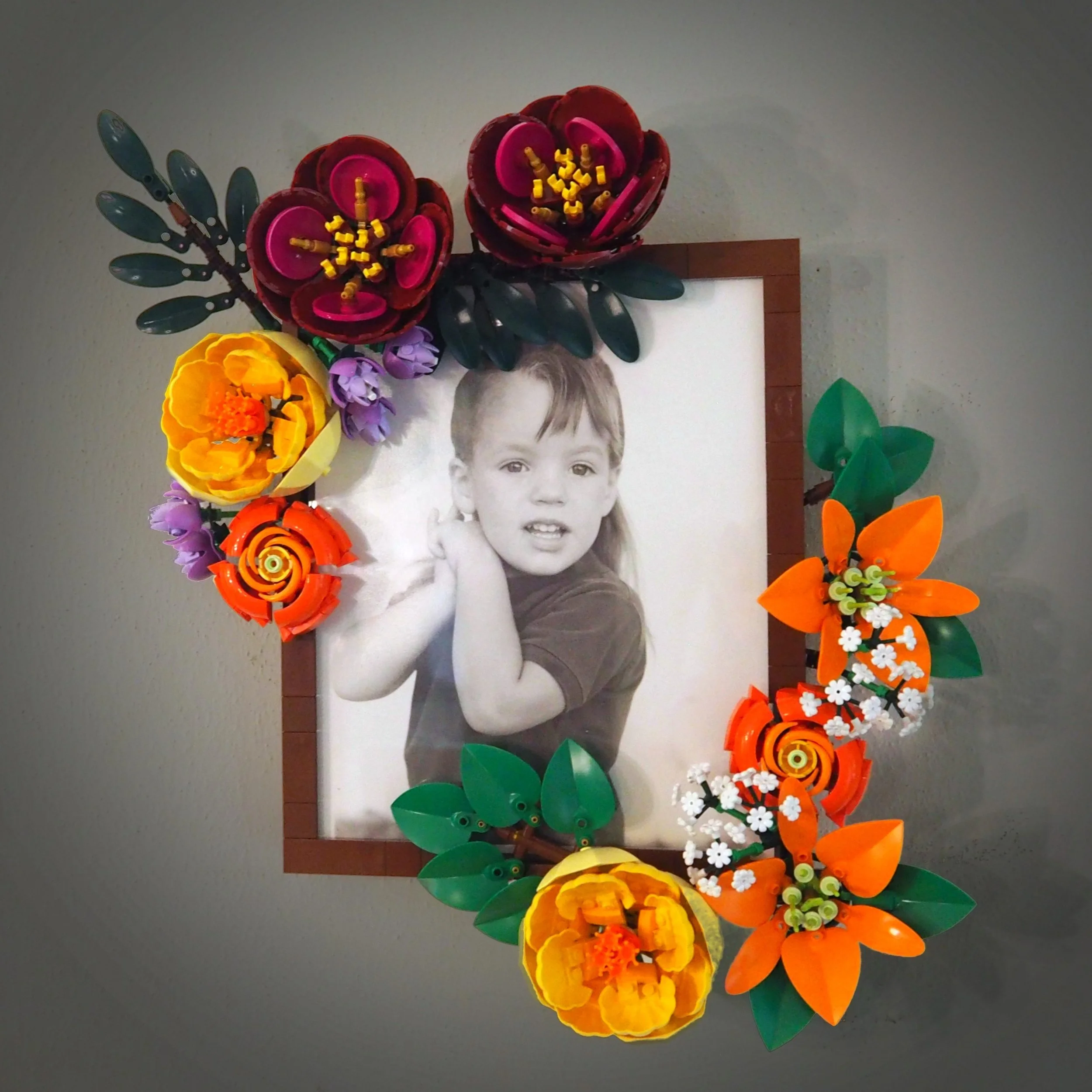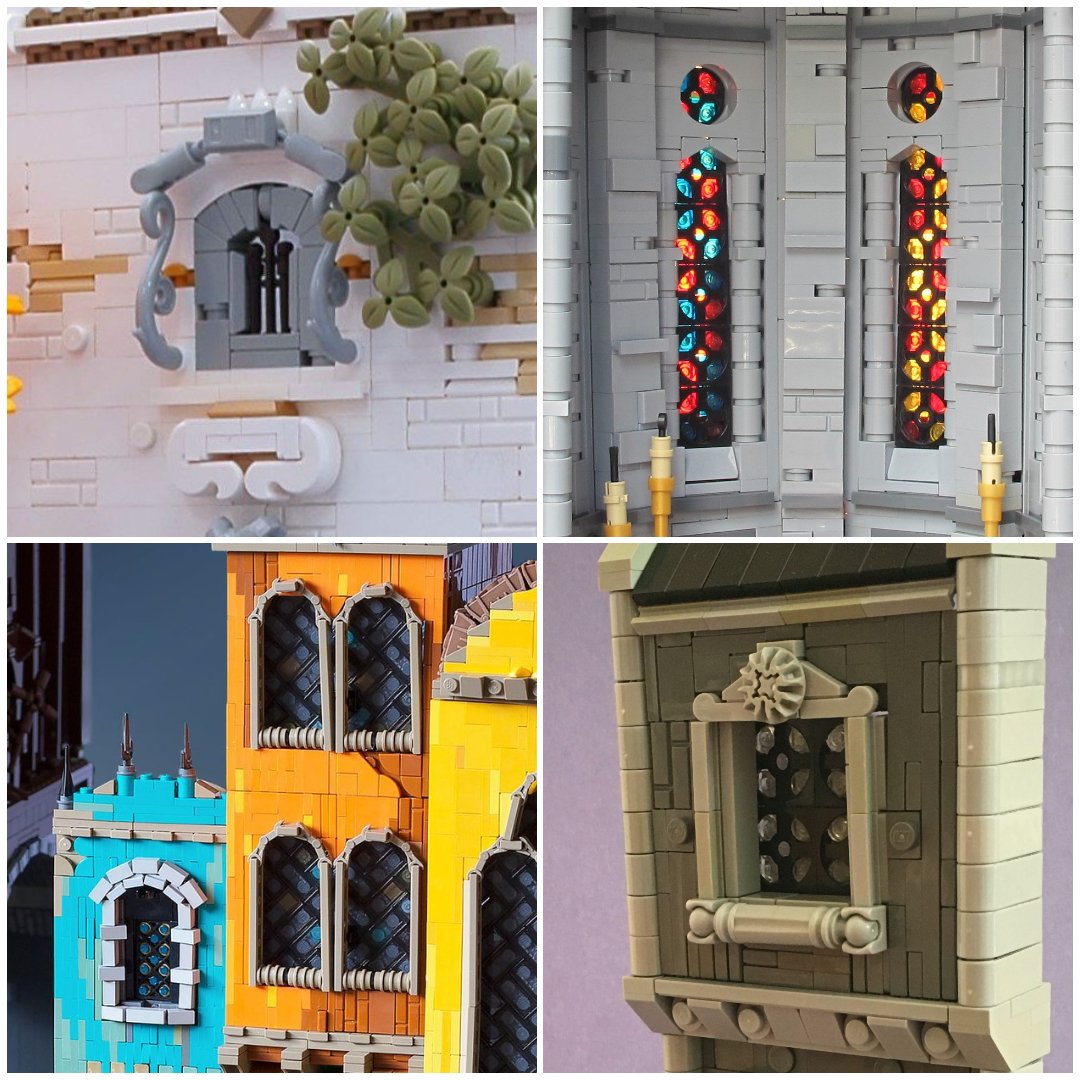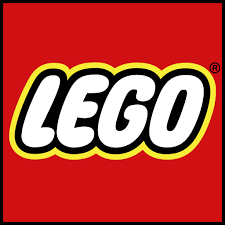Habitats for CMF Series 27: Constraints That Spark Imagination
/Today’s guest article comes from Davide Sacramati, aka ABrickDreamer, an Italian AFOL living in Singapore and minifigure habitat enthusiast. You can find him on Instagram and YouTube.
Collectible Minifigures
As a MOC builder, I’m always on the lookout for inspiration for my next builds, and nothing sparks my imagination better than a new series of collectible minifigures!
The LEGO Group has been spoiling us with amazing minifigs, along with the very successful Dungeons & Dragons series that followed the Space-themed series. Now we’re back to the standard format with Collectible Minifigure (CMF) Series 27, and I’d say we’re still being spoiled!
The Series 27 Minifigures
The Series 27 lineup of 12 minifigures covers a variety of themes and should satisfy all types of collectors.
The minifigures, provided by The LEGO Group on behalf of BrickNerd, came in a lovely, tall green box containing the complete set of twelve. I wish this would be available for purchase worldwide, as I like to collect the full series without having to buy full boxes. At the moment, the alternative is to be ready to scan a lot of barcodes, try your luck with the packs of six, or get a complete set in the aftermarket.
Once I finally had the series in my hands, ideas started to pop up in my head—it’s time to build! The fastest and most accessible way to build something cool for minifigures is habitats. BrickNerd has covered habitats quite extensively, particularly with Josh Parkinson, who is definitely one of the master builders in this category. You can find multiple habitat deep dives here.
I have also built a ton of minifigure habitats… like a lot. Most recently, I built completed stacks for the Series 25, Space, and D&D series. Here are some of the highlights:






Building a full stack of 12 minifigure habitats can be a bit overwhelming, so I like to divide the minifigures into sets of three, and if possible, into some shared genre or other categorization. I find that a stack of three makes for a good display and photography as well.
With Series 27, the first set of three was quite obvious for me—I will call it “Fan Favorites,” as I guess these will be the most sought-after minifigures: Wolfpack Beastmaster, Pirate Quartermaster, and Steampunk Inventor.
After that, I grouped together the ones I’m actually not a big fan of as they are usually harder to build habitats for: “The Costumes.” Technically, only two of these are costumes, but it kind of makes sense. Pterodactyl Costume Fan, Hamster Costume Fan and Bogeyman.
I labeled the third set “The Cute Ones.” They might not be the most popular, but they are interesting figs that will make for some interesting habitats: Cupid, Plush Toy Collector and Cat Lover.
Last, but not least, “The Cool Kids.” Very interesting minifigures, but the habitats might be challenging to build: Jetpack Racer, Astronomer Kid and Longboarder.
Basic Guidelines for Habitat Building
Before starting to build, I have to remind myself of my personal set of rules to follow when building habitats:
If possible, pick the color scheme before starting to build as it speeds up the building process.
If needed, feel free to expand outside the standard habitat grid.
However, don’t expand too much outside the grid either, otherwise they will not stack properly.
Add windows and doors. They give texture to the habitat since solid walls can be boring at times.
If needed for the story, add additional minifigures and animals.
Don’t focus too much on details—you can always add them later.
The Fan Favorites
My starting point was the Wolfpack Beastmaster, as this is the figure the community is most excited about. As a reference, I was looking at images of the Wolfpack Tower set 6075. The images helped me to set the color scheme of the habitat: black tower, red roof, light bluish grey bridge, and rocks. Including a tower meant I had to build a little bit higher than usual, a space was left behind the tower to eventually stack a habitat on top of it.
The minifigure fits nicely within the rather tight space, but the new wolf was bigger than expected. I then had to expand the habitat further out and add a small tree to contrast all the grey bricks used. I definitely expanded this habitat way too much, but the Wolfpack Beastmaster deserves special treatment.
Next up is the Pirate Quartermaster. After the dark tones of the first build, I wanted something brighter. A pirate island with a tide and shoreline made for a nice contrast to the habitat for the Beastmaster. The pirate island also needed a blue sky backdrop. Skies in habitats are often a bit boring and require lighter shades of blue, of which I don’t have much in my inventory. To help reduce the use of blue bricks, I used a printed 2x5x6 wall brick that fits the theme and saved me some parts.
In designing the palm tree, I didn't use the proper palm leaves because they are quite big and would create too much shade, making the scene darker, a common problem with trees in these small builds. Alternatively, I tried out some upside-down fern pieces, which looked all right. Once again, I expanded the standard habitat size in a few places, but I think in a more acceptable way.
To complete the first stack, we have the Steampunk Inventor—another long-awaited minifigure. I had recently built a Steampunk Lighthouse for Wandering Skies, so I “stole” some parts and ideas from it. While looking at Pinterest images for inspiration, I realized that tall round windows fit very well in this world—gears and pipes notwithstanding. The window was way more challenging than expected, especially because of the printed dish. At first, I used probably the most illegal technique ever, but it was too much even for me.
I found a way to have a decent connection at the cost of expanding upwards again. The result is that I can’t stack another habitat on the left side. Accepting my fate, I found a way to connect the gold dish and add the gold fence sideways. As a final touch outside the window, I repurposed one of the microscale airships from my lighthouse in the distance for some perspective.
I’m super happy with the Fan Favorite stack, but I spilled over too much… as expected. This is the only possible combination between these three. And because of the Wolfpack tower, the habitat on top has to shift left one stud. Oh well, I guess one does not have to be so strict with the parameters of a habitat unless you’re building for a collab.
The Cute Ones
The second stack I chose to work on—The Cute Ones—has a totally different vibe. Starting with Cupid, I had a clear picture in my mind: a loving couple with Cupid flying over, ready to release his love arrow. Fitting three figs in an 8x8 base is not an easy task. To make good use of the space, I had the couple sitting down at a picnic. Being an outdoor scene, I know I would have the boring blue sky issue that I mentioned before. To keep from having a monotonous blue sky for the backdrop, I sloped up the grass, and added a white fence, a cloud and the sun peeking through.
I needed some SNOT bricks to connect the butterflies, but the only ones I have in this blue color have studs on two sides. But some good old SNOT work saved the day. I also repurposed a tree from one of my recent medieval MOCs so that Cupid could descend from it. According to my guidelines, it was time for a few more details. The couple is sharing a pretzel, as I think it has a sort of heart shape, a red bird added a little pop of color, and a flaoting heart tile completed the scene. I can see many people using Cupid in similar scenes for their sigfigs.
For the Cat Lover, I went for a masonry apartment vibe. I worked this one in reverse. First, I took out some more cats from my inventory and built some accessories. A sofa, a carpet, an old TV and a couple of plants. The cats have a litter box, a bowl for food, and a cat condo inspired by the one in the Tudor Corner modular but using some different parts.
I kept the walls more simple here, just playing a little bit with depth and texture. Finally, I added a few accessories on the right wall and a window on the left. On the outside, some plants peek through the window along with a curious blue bird. As you can see, I’m respecting the habitat standards more closely so these can stack without issue.
The Plush Toy Collector is a very cute minifigure that comes with some very cute round things resembling Squishmallows. I honestly didn’t know these existed—well, now I know. I went a little bit out of my comfort zone here by building in pink. My parts in this color are dangerously low, so compromises had to be made as you can see from the backside. (Let’s remember to cover it up with another habitat!)
Like us AFOLs sharing our collections on social media, this collector is running a YouTube channel from her bedroom. She has all the equipment needed: a camera, lights, a computer, and headphones. Of course, she also needed a cool backdrop, so I pulled out a couple of teddy bears and some colorful tiles, mostly from Vidiyo and Dots sets. I totally ran out of pink, so I had to use some trans-light blue plates to the wall, hoping they would look like strip lights. Luckily, I’m building small.
With another stack done, I think a decent level of cuteness was achieved (though not as much as BrickNerd’s AdoraBuild!). This stack totally contrasts the first fan-favorite set—it has very different colors and pretty much stays inside the regular habitat standard dimensions. It shows how you can have two very different approaches to minifigure habitats, but both are valid.
Connecting the Stacks
With six habitats built, I’m halfway through the series. Unfortunately, I only have time for one more habitat at the moment. However, you can follow me on Instagram, and I will certainly complete the rest! But one more habitat should work nicely to connect the two stacks.
I selected the Astronomer Kid as my final minifigure. I split the build into two sections: the kid’s bedroom and the night sky. Some time ago, I took a similar approach to my Jasmine habitat. I also wanted to use the Space CMF Series stars tile bases, another technique I’ve used several times.
The build started reminding me of the GWP set Cosmic Cardboard Adventures, so I paid homage to it by using it as a reference for the color scheme and the stars inside the room. I started by integrating the space tiles into the external wall before moving to the bedroom. There was a little gap from using this technique, but I could close with brackets and it should not be seen anyway. I built an angled roof from which I can hang a planet.
Time for details! I added a bedside table with a lamp and a globe. The bed is simple with a cloud headboard which works well. I filled out the rest of the scene with a space sticker, telescope, a toy rocket, and a printed LEGO space set tile that came with the recent yellow delivery truck.
So with that final habitat, I’ve completed seven out of the 12-figure series. I’m pretty happy and already have an idea for the Bogeyman, but I know the other costumes will be difficult to pull off. The Longboarder and Jetpack Racer are very cool minifigs, but I still haven’t figured out what to build for them just yet. Maybe you could share some ideas in the comments down below.
Why Minifigure Habitats?
As you can tell, I love building minifigure habitats! I think they are a great exercise for both beginner and expert builders. Minifigure habitats are accessible and don’t require a huge amount of parts so they are perfect for someone who is building up their inventory. At the same time, they are challenging. 8 x 8 studs is a very small space to work with, and even skilled builders are tested with the limitations. But that’s the beauty of it. I always advocate for building small, as it helps to boost your creativity and find clever solutions.
Another great thing about habitats is that you don’t have to look for inspiration, the minifigures will provide it. Here you can see all seven habitats, with the Fan Favorite and Cute Ones sub-stacks connected by a wide-eyed space fan.
Lastly, let’s not forget about time constraints. We all have busy lives with family and work, but sometimes, we just want to build LEGO. Often, we don’t have the time to embark on a massive project. Habitats are a great indulgence since they can only take a few minutes to a few hours to build with no commitment to a larger project.
If you are still not sold on minifigure habitats yet, you can check out my YouTube playlist where I’ve already built more than 80. I even have a series of microscale habitats, but that’s a story for another time. In the meantime, consider getting your hands on the fresh new LEGO CMF Series 27 and start building!
What should we build with the remaining minifigures from the series? Let us know in the comments below!
Do you want to help BrickNerd continue publishing articles like this one? Become a top patron like Marc & Liz Puleo, Paige Mueller, Rob Klingberg from Brickstuff, John & Joshua Hanlon from Beyond the Brick, Megan Lum, Andy Price, Lukas Kurth from StoneWars, Wayne Tyler, LeAnna Taylor, Monica Innis, Dan Church, Roxanne Baxter, and Steven Laughlin to show your support, get early access, exclusive swag and more.





















































